While I did not want to ride across the entire Great Plains of North America on this Tour, I did want to stop somewhere along the way to pick up a few birds of the prairies. The most conveniently located place, which was both close to a stop on the Southwest Chief route, and within a reasonable distance from a birding hotspot, seemed to be the area around Newton, Kansas, so that was the place I chose for a short visit. The notable birding location in the area is the Tallgrass Prairie National Reserve, a site jointly managed by the US National Park Service, and The Nature Conservancy. The chance to see one of the last remaining areas of prairie in its natural state was also a big draw for me. While it was a little too soon for many wildflowers to be in bloom, and the Tallgrass
was not very tall yet, spring was definitely in full force on the Reserve, and the scene was really quite beautiful.
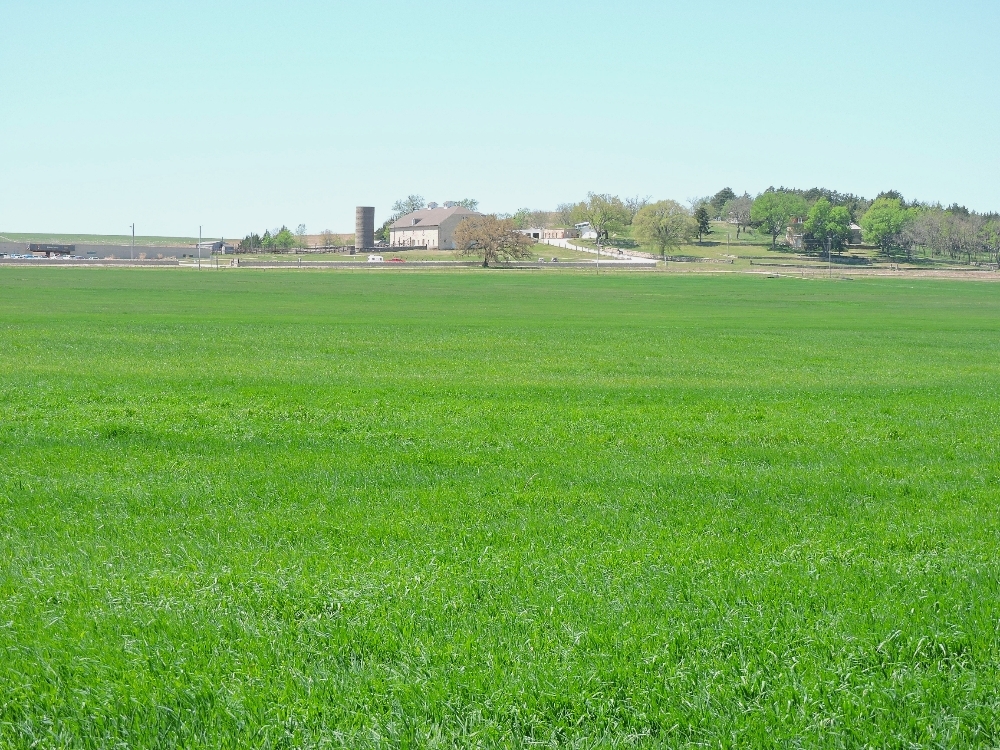
The train arrived in Newton at about 3:30 AM, and with 90 km to ride to get to the Reserve, I decided to start out before dawn, to maximize my time at the site. It was quite cold at that hour, but by the time I arrived, the Sun had warmed things up considerably. After the tiring transfer and ride, I didn’t plan on spending the rest of the day at the site, but even with a short hike on the prairie, I was able to pick up a couple of new birds.
A Lark Sparrow…
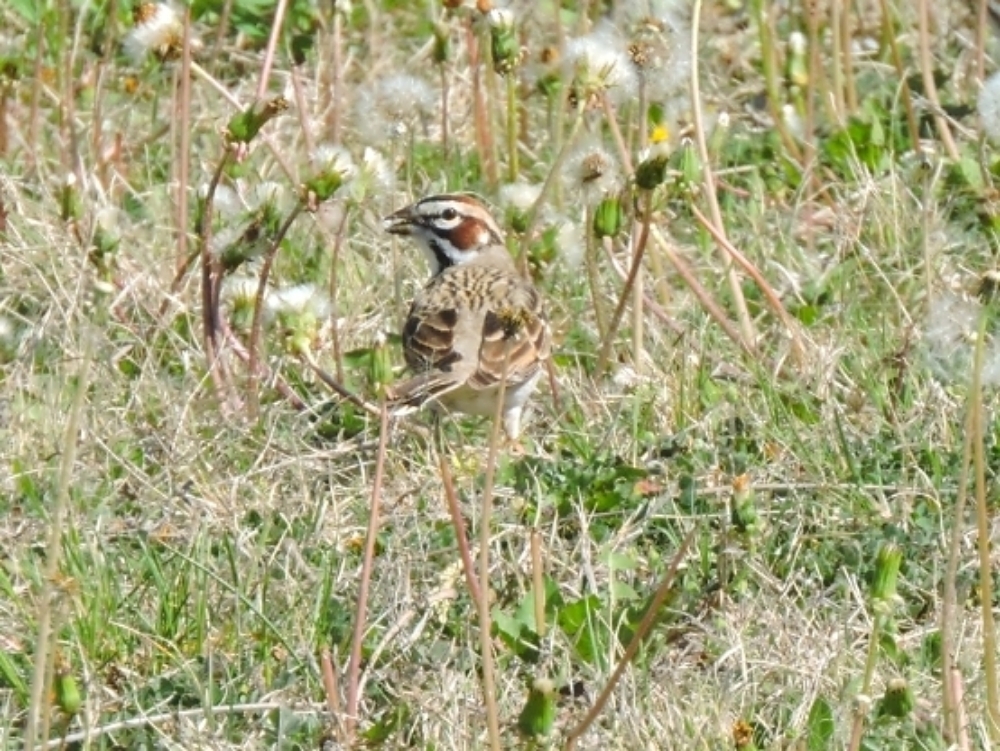
…and a Grasshopper Sparrow.
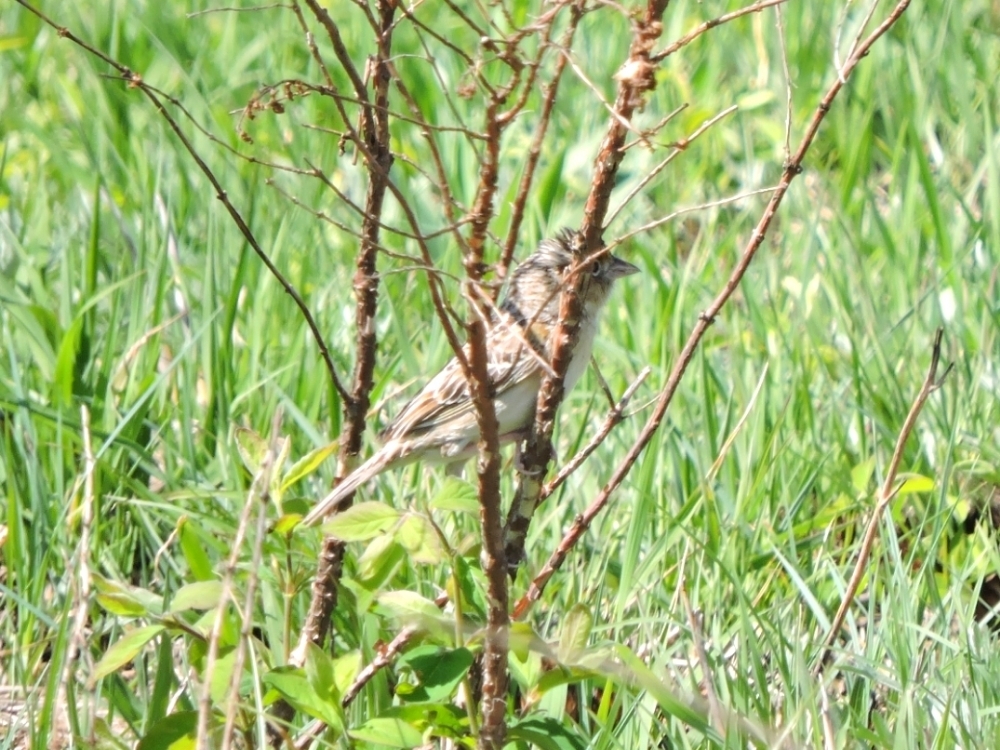
There is a man-made lake nearby, called Chase State Fishing Lake, which has free camping, so that was my location for the next two nights. On my arrival the first evening, I added a Nelson’s Sparrow.
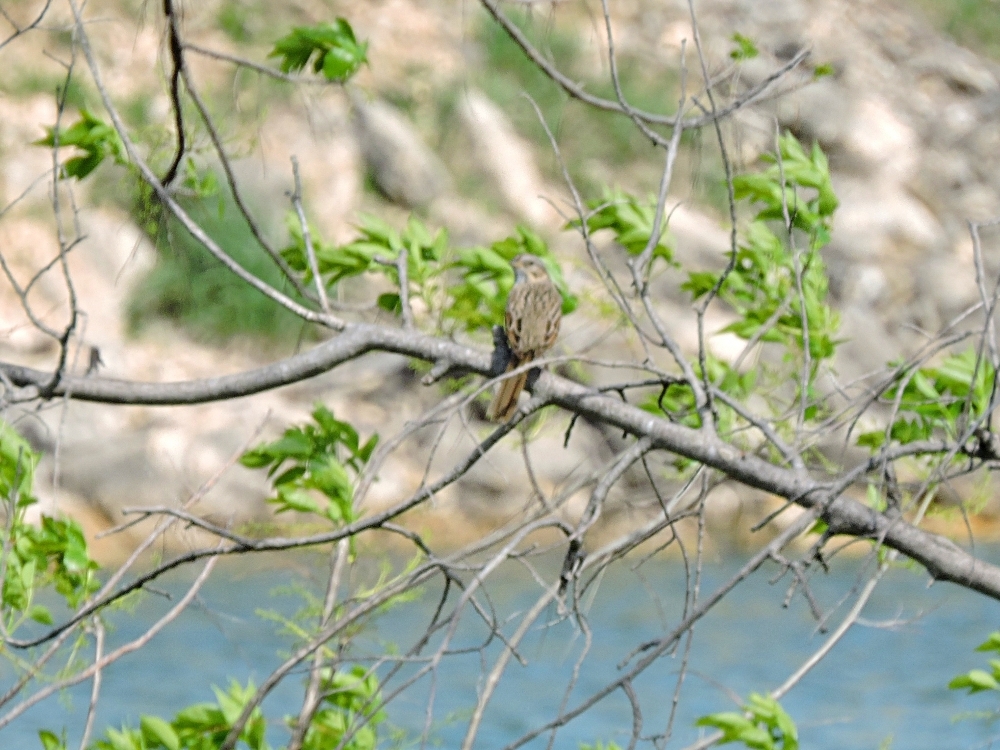
I had originally planned on riding over to Flint Hills National Wildlife Refuge the next day, but I shelved that idea, because it would have been a very long round trip, and I really did need an easy day at that point. That turned out to be a great decision, because that day was dominated by a ferocious wind that would have made any long ride extremely oppressive. Instead, I explored the local area in the morning, and then went back to Tallgrass in the afternoon. During the morning, I found a large creek to the south of Cottonwood Falls that turned out to be a nicely productive spot.
Shortly after I arrived, a group of Northern Rough-Winged Swallows appeared and I made my first sighting of that species, which was great because it is one that I should have seen previously, but never have. I even obtained a tolerable flight shot, a rare event for me.
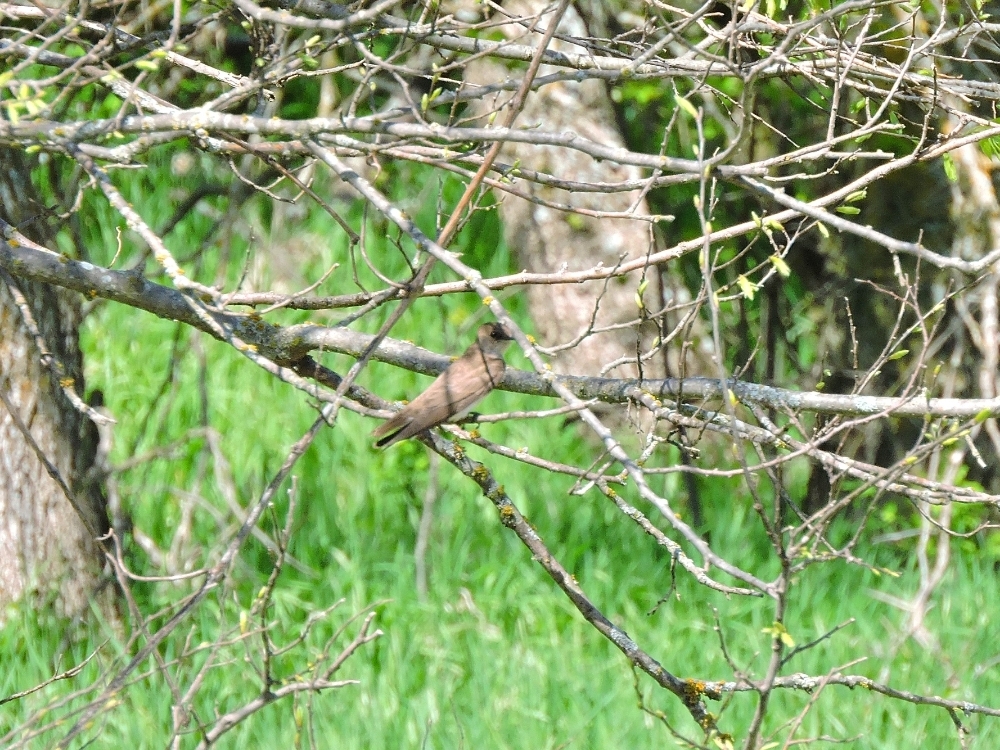
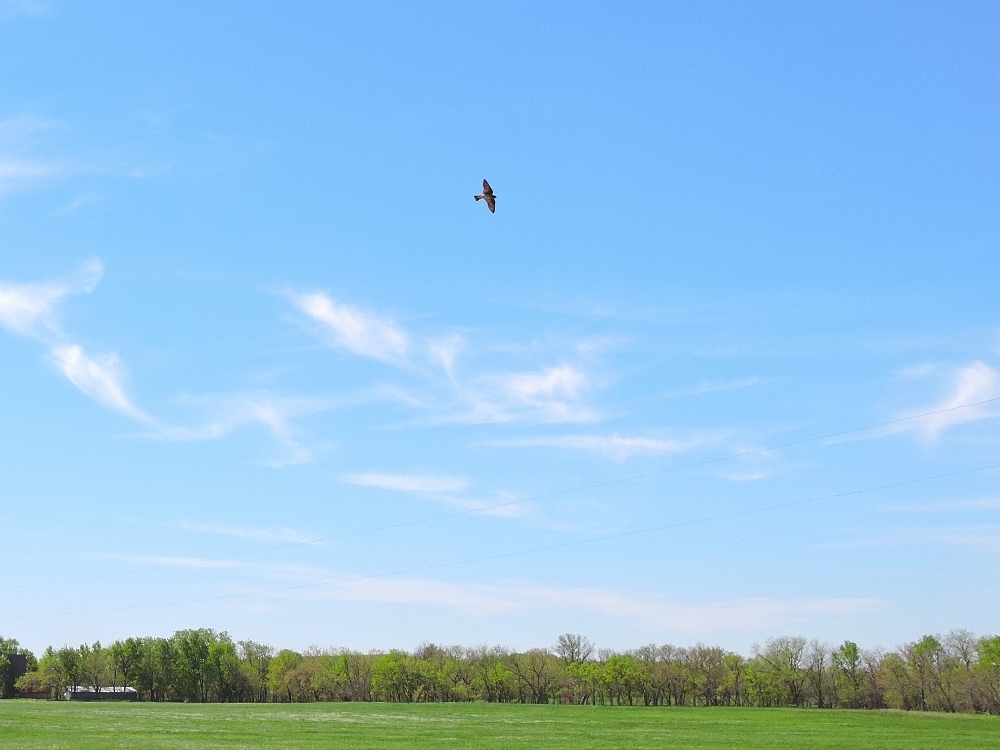
Also at that location, was a beautiful Eastern Bluebird…
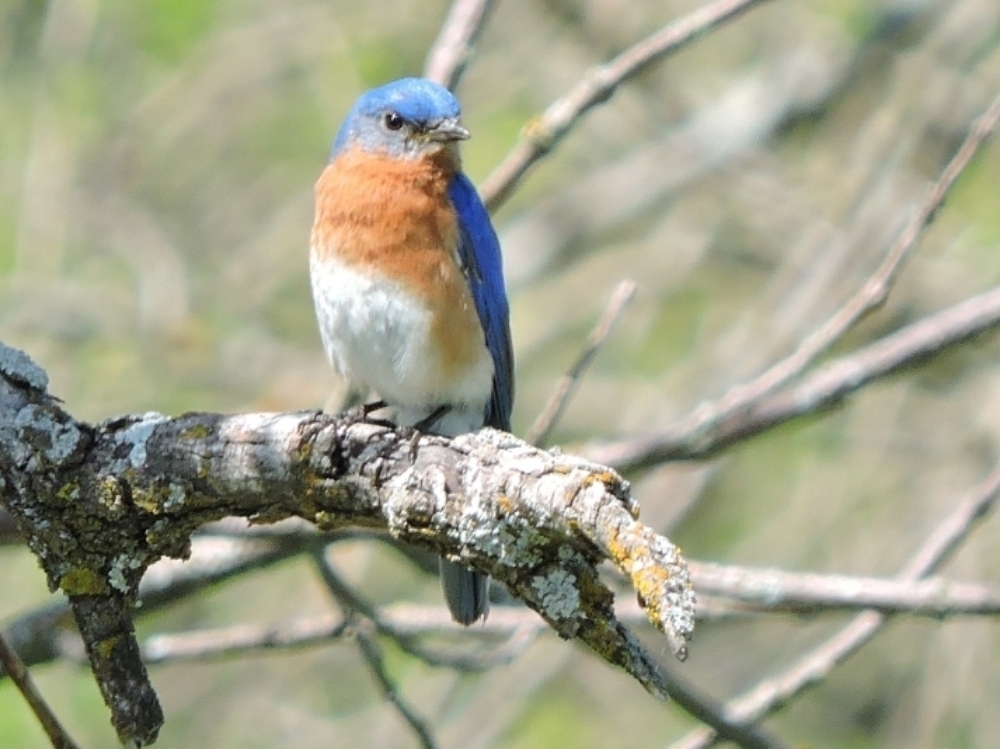
…and an Eastern Wood-Pewee, in addition to a number of nice species I that I have already seen, such as Harris’s Sparrow.
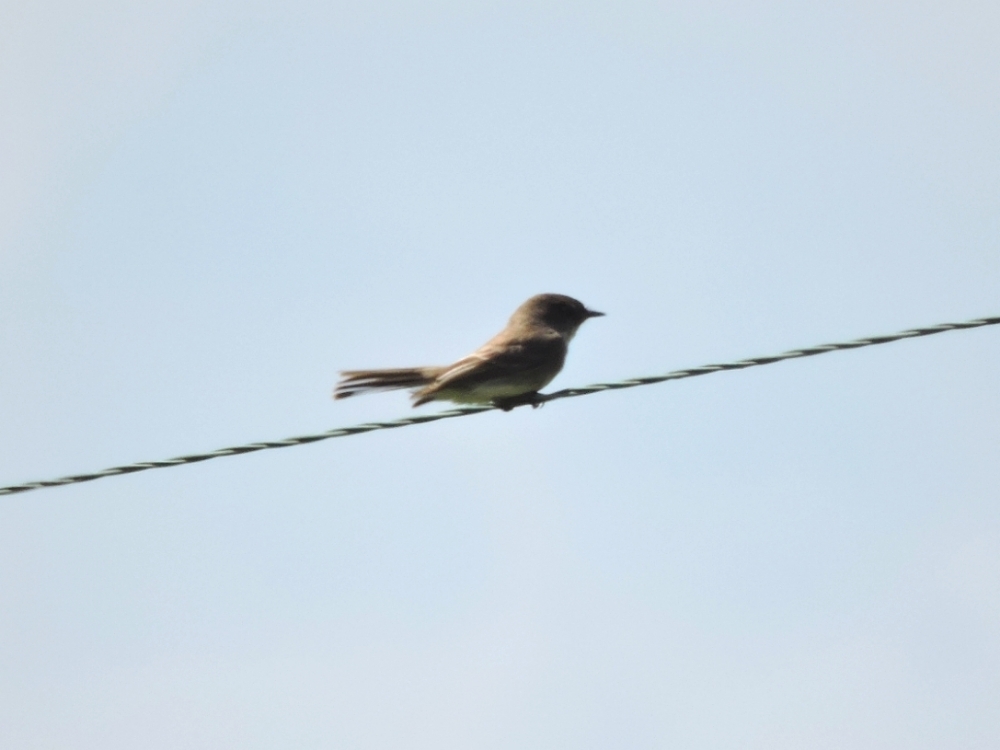
On the way back to Tallgrass, I found a Scissor-Tailed Flycatcher, a species I thought I had seen already, but actually hadn’t. So it was fortunate that I stopped for this photo.
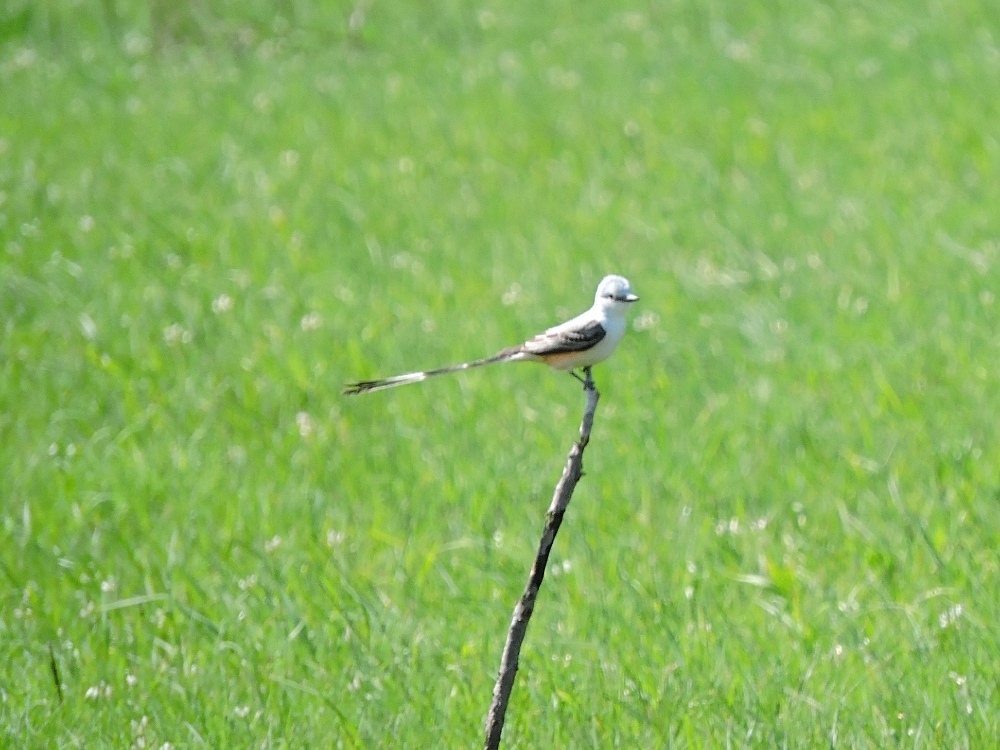
In the afternoon I went for a long walk through the partially wooded section of the Reserve, and had a beautiful and relaxing time. The birding was not that great, since the howling wind overcame any birdsong I might otherwise have heard. Nevertheless, I picked up one new bird, a Northern Parula, though it escaped my attempts to photograph it.
I enjoyed this short stop, and am fairly satisfied with eight new life birds for the effort. I missed a few species I would have liked to have seen there, possibly because it was still a little too early for all the migrants to be around, but I may have additional chances for some of them in the days ahead. During that long walk I spent some time considering the circumstance that since the extinction of Titanis walleri one of the Terror Birds,
the North American Plains have had no large native birds, unless, I suppose, if you count Turkeys, or migrating Cranes. The other flat grasslands of the World are inhabited by Ostriches, Rheas, Emus, Bustards, and even Seriemas, and the Secretary Bird. Our small prairie birds are beautiful on their own, of course, but it would be great to have some larger feathered creatures to occupy some of that vast space along with them.